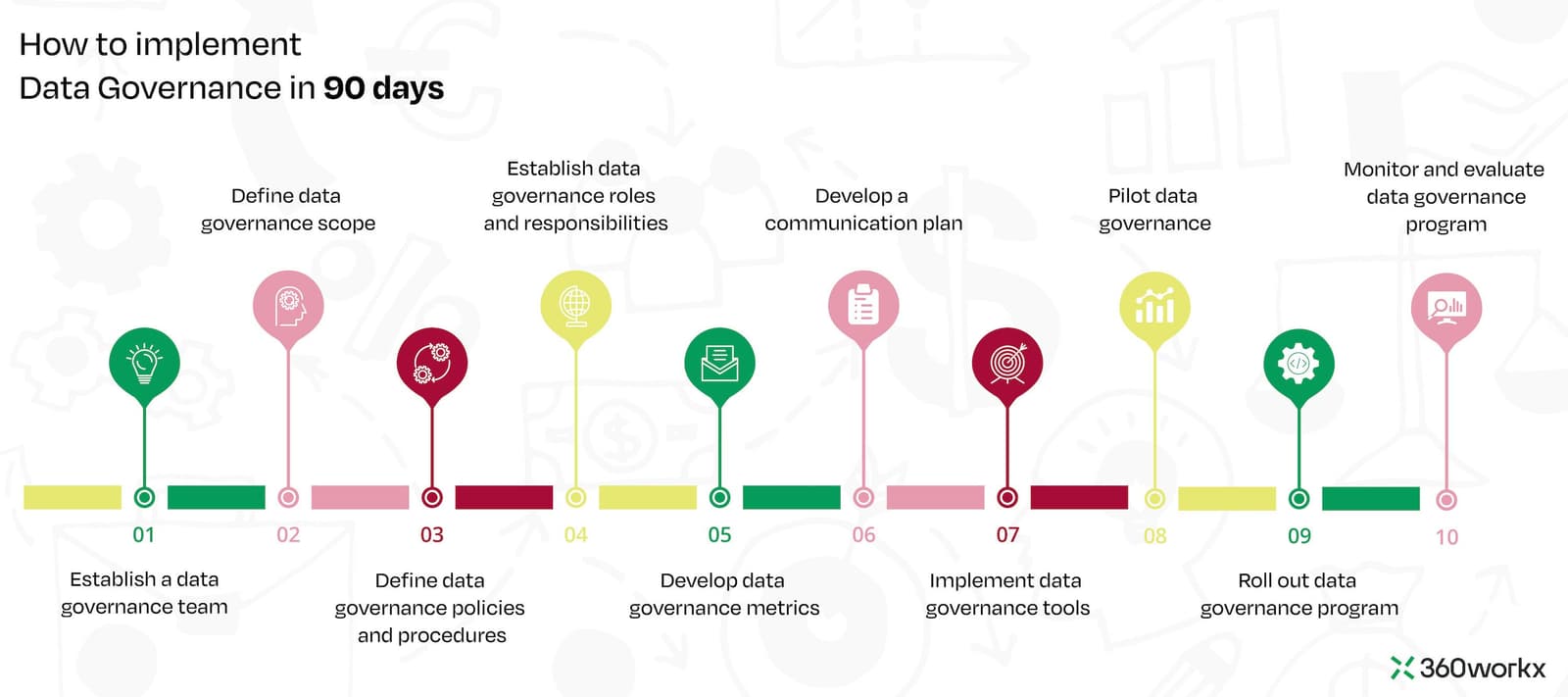- Establish a data governance team: Identify a core team of stakeholders who will lead the data governance effort. This team should include representatives from different business units, IT, and executive leadership.
- Define data governance scope: Define the scope of data governance by identifying the business processes, data assets, and data domains that will be included in the data governance program.
- Define data governance policies and procedures: Develop data governance policies and procedures that outline how data will be managed, stored, shared, and protected. Ensure that these policies align with regulatory requirements and industry best practices.
- Establish data governance roles and responsibilities: Define the roles and responsibilities of the data governance team and other stakeholders involved in data management. This includes data owners, data stewards, data custodians, and executive sponsors.
- Develop data governance metrics: Develop metrics and KPIs to measure the effectiveness of the data governance program. This includes data quality, data availability, data usage, and data compliance.
- Develop a communication plan: Develop a communication plan to ensure that stakeholders are informed and engaged in the data governance program. This includes regular updates, progress reports, and training sessions.
- Implement data governance tools: Implement data governance tools such as data catalogs, metadata management tools, and data quality tools to support data governance processes and practices.
- Pilot data governance: Pilot the data governance program in a specific business unit or data domain to test its effectiveness and identify areas for improvement.
- Roll out data governance program: Roll out the data governance program to the rest of the organization, starting with high-priority data domains or business processes.
- Monitor and evaluate data governance program: Continuously monitor and evaluate the data governance program to ensure its effectiveness and identify opportunities for improvement.
How to implement Data Governance in 90 days
